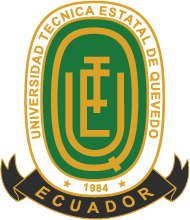Morphologic response of four commercial hybrids of maize (Zea mays L.) by soil and soil-leaf fertilization
DOI:
https://doi.org/10.18779/cyt.v11i1.221Keywords:
GENETIC POTENTIAL, MICRONUTRIENTS, FOLIAR FERTILIZATIONAbstract
Corn crop yields are below the genetic potential of hybrids grown in Ecuador. Among the limiting factors is micronutrient deficiency. Foliar fertilization is a practice used to correct nutritional deficiencies not provided by edaphic fertilization. The objective was to evaluate the efficiency of foliar fertilizers in the morphological characters of the hybrids: H.Das-3383, 2B-604, Insignia-105 and Dekalb-7500. A randomized block design was used, with eight treatments. The foliar fertilization accelerates the process of formation of floral organs to the hybrid 2B-604 to DFM and DFF with 50 and 53 days, also improves the AP and AIM, with 244 and 146.67 cm. The DM and LM is increased with 4.9 and 18.91 cm. The hybrids 2B-604 and Insignia-105 reached the highest yields with 7.19 and 7.18 t / ha-1 respectively. The program of edaphic + foliar fertilization, enhances the genetic potential of the hybrids 2B-604 and Insignia-105, by the assimilation of nutrients through its leaves
Downloads
Downloads
Published
How to Cite
Issue
Section
License

This work is licensed under a Creative Commons Attribution-NonCommercial-ShareAlike 4.0 International License.
Licensing Agreement
This journal provides free access to its content through its website following the principle that making research available free of charge to the public supports a larger exchange of global knowledge.
Web content of the journal is distributed under a Attribution-NonCommercial-ShareAlike 4.0 International.
Authors may adopt other non-exclusive license agreements for the distribution of the version of the published work, provided that the initial publication in this journal is indicated. Authors are allowed and recommended to disseminate their work through the internet before and during the submission process, which can produce interesting exchanges and increase citations of the published work.












